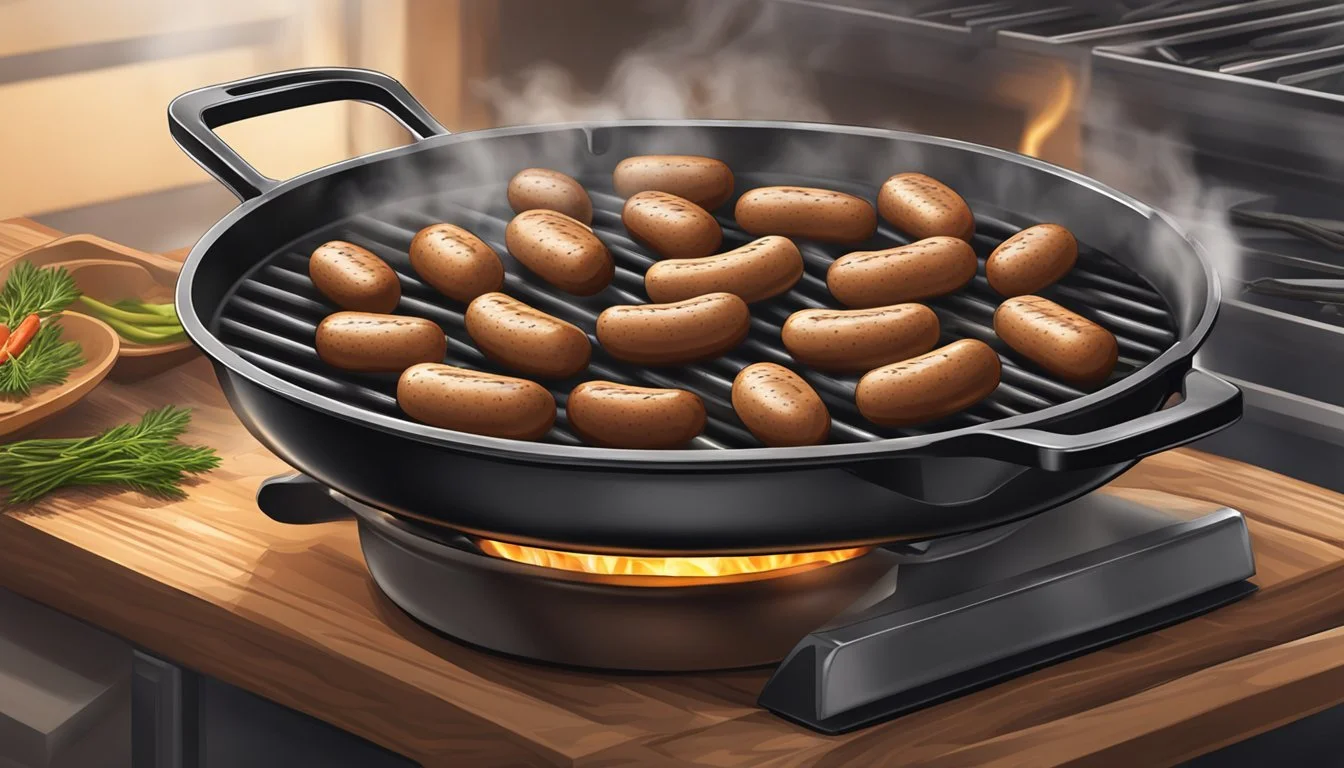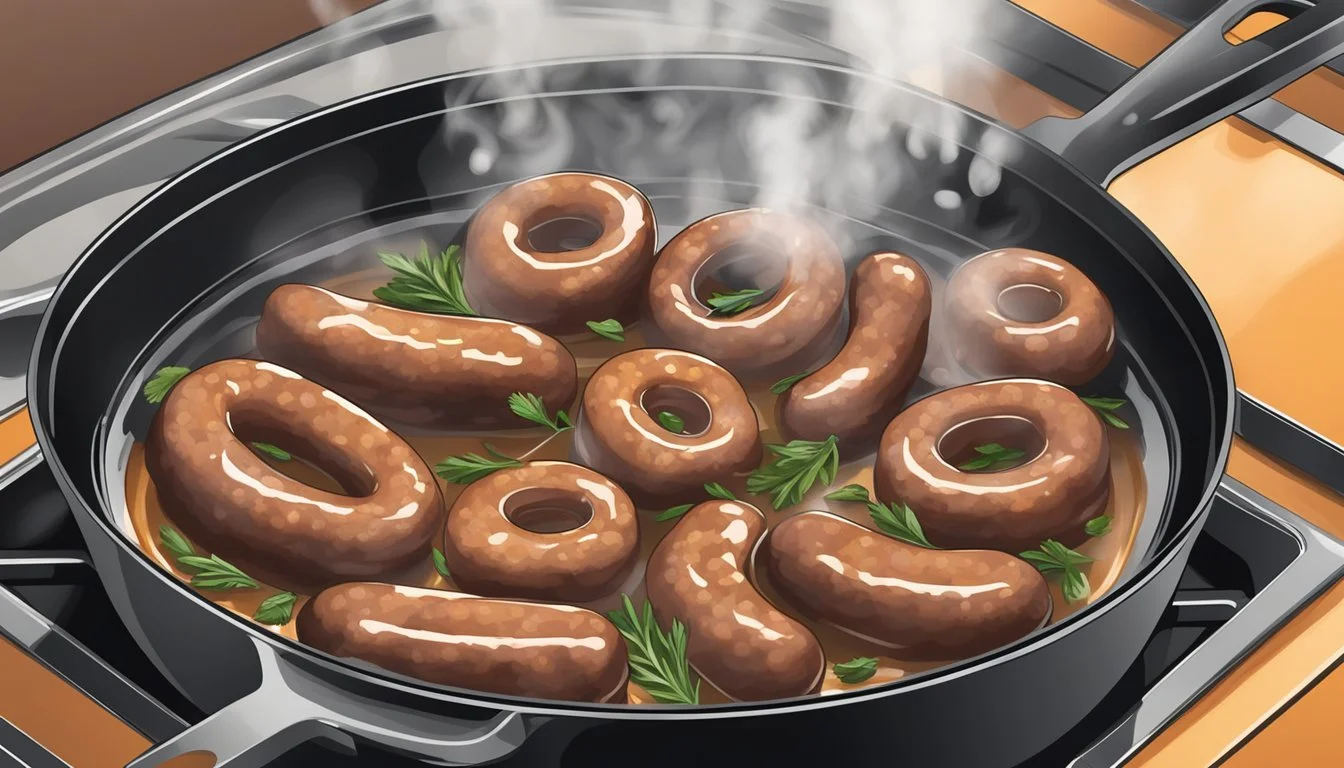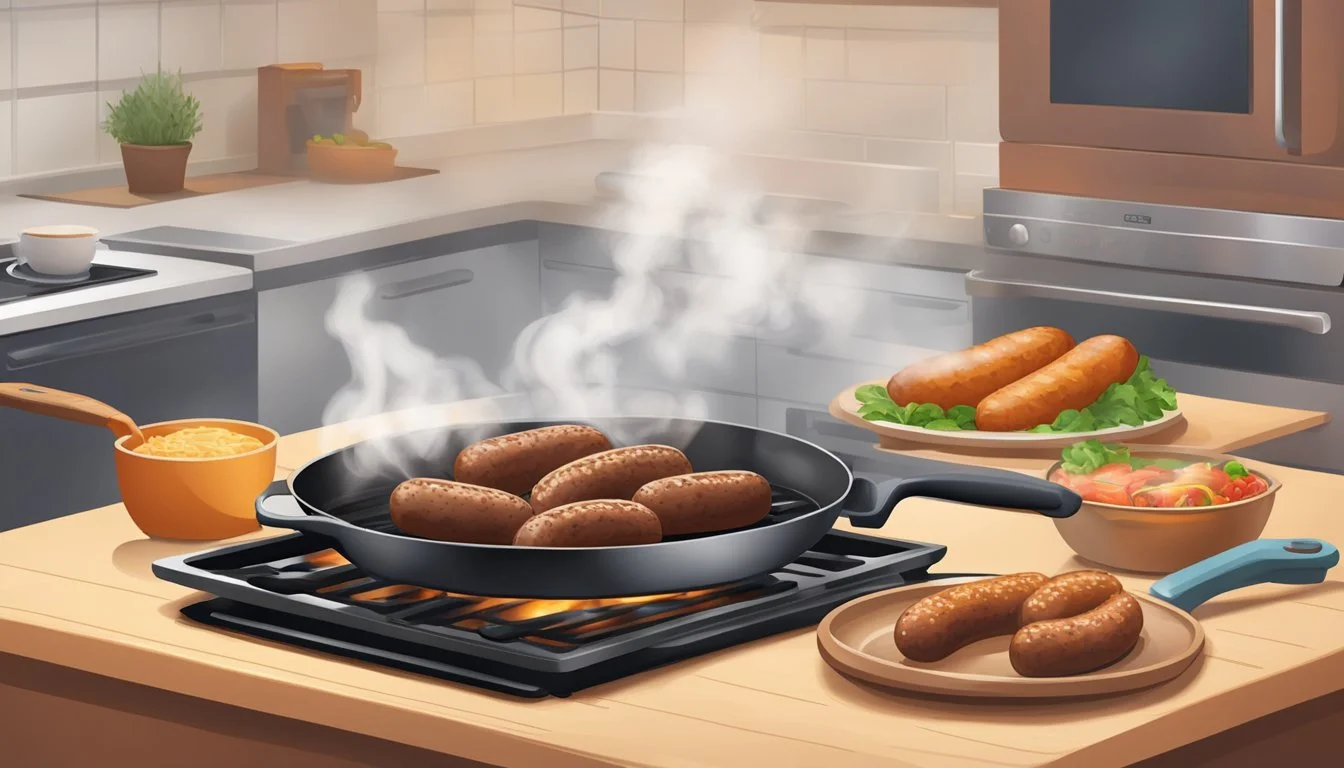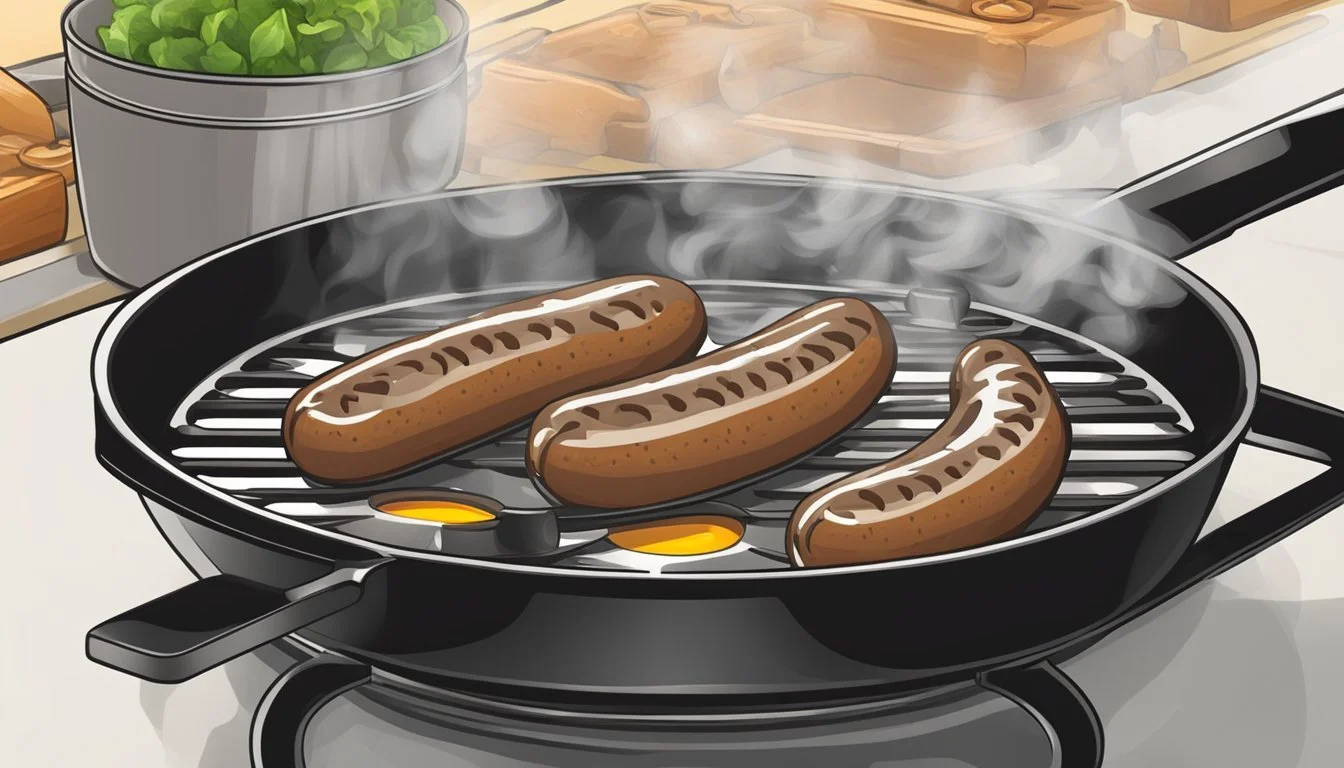Best Way to Reheat Elk Sausage
Ensuring a Juicy Interior Every Time
Reheating elk sausage to perfection is a matter of preserving its rich flavor and succulence. Elk sausage, with its leaner meat and robust taste, requires a careful approach to ensure the juiciness and quality are maintained throughout the reheating process. Finding the right method not only does justice to the meat's intrinsic properties but also ensures that every bite remains as enjoyable as when it was first cooked.
While traditional sausages may provide some leeway due to their higher fat content, elk sausage demands a more attentive strategy to avoid drying out. The key to reheating this delicacy lies in a gentle and controlled application of heat, allowing the meat to warm through without losing its moisture. Ensuring that the sausage maintains its juiciness is crucial, as this contributes significantly to the overall sensory experience, highlighting the unique flavors of the game meat.
Selecting the appropriate reheating technique is essential for elk sausage to remain a delectable and tender delicacy. Whether choosing the oven, a stovetop pan, or even a microwave, each method has its own set of guidelines to follow for optimal results. It is through these well-executed reheating practices that the inherent qualities of elk sausage are safeguarded, culminating in a delightful dish that is both flavorful and moist.
Understanding the Basics of Elk Sausage
Elk sausage is a delicacy that requires careful reheating to preserve its juiciness and flavor. This section outlines the key components of successfully reheating elk sausage and factors to consider to ensure it remains moist and tasty.
Benefits of Optimal Reheating
Optimal reheating techniques can significantly enhance the taste and texture of elk sausage. It is paramount to reheat sausages in a way that maintains moisture and brings them to the proper internal temperature without overcooking. When done rightly, it preserves the sausage’s juicy interior and maximizes the flavor.
Moisture Retention: Wrapping sausages or using a covered dish ensures moisture is retained during the reheating process.
Internal Temperature: Using a meat thermometer is crucial to check the sausage's interior without cutting into it, targeting the sweet spot where it's warm enough but not dry or overcooked.
Factors Affecting Juiciness and Flavor
Numerous factors influence the juiciness and flavor during the reheating process. They must be carefully managed to keep the essence of the elk sausage intact.
Reheating Temperature: A moderate oven temperature of around 325°F (165°C) is recommended to gently warm the sausage.
Cooking Duration: Overheating can dry out the meat, hence timing should be monitored closely, with the goal of reaching an internal temperature of around 145–160°F (63–71°C) for optimal safety and taste.
Handling the Sausage: Using implements like spatulas or tongs that won’t pierce the casings helps to keep all the juices locked inside the sausage.
Monitoring and adjusting these factors ensures that the reheat process preserves the elk sausage's innate qualities, making it as enjoyable as when first cooked.
Preparation for Reheating
Before one begins the process of reheating elk sausage, it is essential to properly prepare the sausage to preserve its quality and flavor. The key steps involve thawing, if necessary, and setting the stage to ensure the sausage maintains its juicy interior during reheating.
Thawing Frozen Elk Sausage
If the elk sausage is frozen, it should be transferred from the freezer to the refrigerator to thaw slowly. This can take a number of hours or overnight, depending on the sausage's thickness. One should never thaw meat at room temperature as it can promote bacterial growth. Thawing inside the fridge ensures that the sausage remains at a safe temperature, preserving its freshness and quality.
Step 1: Place the elk sausage in an airtight container or a resealable plastic bag.
Step 2: Put the container in the refrigerator.
Time Required: Calculated as roughly 24 hours per 5 pounds of meat.
Pre-Reheating Considerations
Once the elk sausage is thawed, it is important to bring it to room temperature before reheating. Taking it directly from the fridge to a heat source can result in uneven reheating. Allowing the sausage to sit out for about 20 minutes should suffice. It is also beneficial to assess whether the sausage needs to be wrapped or covered during reheating to prevent drying out, which retains its juicy interior.
Consideration 1: Evaluate the sausage size—smaller pieces may heat more uniformly.
Consideration 2: Decide on a reheating method that will best preserve moisture and texture.
Oven Reheating Method
When reheating elk sausage in the oven, it's crucial to maintain the meat's moisture while ensuring it heats through evenly. The oven method is reliable for achieving a juicy interior without overcooking.
Preheating the Oven
Temperature: Preheat the oven to 325°F (165°C). This moderate temperature will warm the sausage without burning it.
Rack Position: Position the oven rack in the middle. It provides even heat distribution around the sausage.
Using Baking Sheets and Aluminum Foil
Preparation: Line a baking sheet with aluminum foil for easy cleanup. Alternatively, use an oven-safe dish which can be covered with a lid or foil.
Wrapping the Sausage:
If using baking sheets: Place sausages on the sheet, ensuring they do not touch.
If using an oven-safe dish: Arrange sausages in a single layer.
Covering:
For baking sheets: Tent with aluminum foil to encompass the sausages.
For oven-safe dishes: Seal with a lid or tightly with foil to lock in moisture.
Cooking Time: Heat the sausage for 10-15 minutes. If frozen, they may require an additional 5-10 minutes. Check internal temperature should reach 165°F (74°C) using a meat thermometer.
Using the oven method, reheating elk sausage can be done efficiently while retaining its juicy flavor and ensuring a thoroughly heated outcome.
Stovetop Reheating Method
For those who prefer a hands-on approach to reheating, the stovetop method allows for precise heat control, ensuring that elk sausages retain their succulent interior. This method can be quick and effective, especially when utilizing the right cookware and managing the heat carefully.
Utilizing Skillets and Frying Pans
One should select a skillet or frying pan with enough surface area to accommodate the sausages without overcrowding. A non-stick pan is particularly useful to prevent the sausages from sticking and tearing, preserving their juicy interior. Here is the process:
Preheat the Pan: Place the skillet or frying pan on the stove and preheat on medium-low heat.
Add Water: Pour a small amount of water in the pan, just enough to cover the bottom.
Arrange the Sausages: Lay the elk sausages in the pan, ensuring they do not touch each other for even reheating.
Cover the Pan: Place a lid on top to trap steam and promote uniform heating.
This method typically takes around 7-10 minutes, but one should adjust this as necessary based on the size and quantity of the sausages.
Managing Heat on the Stovetop
Proper heat management is crucial to avoid overcooking or drying out the elk sausages.
Low and Slow: Keep the burner on a medium-low setting to heat the sausages gently, preserving their moisture.
Monitor Closely: Watch the sausages and turn them occasionally for even reheating.
Feel the Heat: The sausage should be warm to the touch before removing it from the pan.
Reaching an internal temperature of 165°F (74°C) ensures the sausages are safe to consume. One could use a meat thermometer to check this. With attentive heat control, the elk sausages will warm through to their succulent best.
Microwave Reheating Method
Reheating elk sausage in a microwave can be quick and efficient, preserving the meat's juicy interior when done properly. The focus should be on using the right power settings and covering the sausage to retain moisture.
Setting the Microwave
To reheat elk sausage in the microwave, one should place the sausage on a microwave-safe plate. The power level is crucial; setting the microwave to 50-70% power is recommended to avoid overcooking. Sausages should be reheated in short intervals—typically 30 seconds—flipping them halfway through to ensure even warming.
Power Level: 50-70%
Duration: 30-second intervals
Flipping: Yes, after each interval
Covering with Damp Paper Towels
Covering the elk sausage with a damp paper towel is essential in the microwave reheating process. This helps to maintain moisture, thereby preserving the sausage's juicy quality. The sausage should be pricked with a fork prior to covering, allowing for more even heat distribution throughout the meat.
Cover: Damp paper towel
Prick Sausages: Yes, for even heating
Additional Reheating Techniques
Exploring alternative methods to reheating can be just as effective in maintaining the succulent nature of elk sausages. The following techniques utilize common kitchen appliances to ensure that these premium cuts are warmed thoroughly while preserving their moisture and flavor.
Using an Air Fryer
An Air Fryer is a versatile kitchen gadget that can reheat elk sausages efficiently. To start, preheat the air fryer to 350°F (175°C). Place the sausages in the fryer basket, ensuring they are spaced out:
Prevent overlapping to ensure even cooking.
Reheat for 4-6 minutes, check if they're heated through.
If needed, continue reheating in 30-second increments.
By circulating hot air around the sausages, the air fryer reheats them quickly and helps retain the juicy interior.
Slow Cooker Warming
A Slow Cooker can also be used for warming elk sausages gently:
Put sausages in the slow cooker.
Cover them to prevent drying.
Set the slow cooker to a low heat setting, keeping the sausages warm without cooking them further.
Heating for an extended period might lead to loss of texture or dryness, so it is crucial to check the internal temperature periodically. Typically, a period of 1-2 hours on low heat suffices for reheating, ensuring the sausages maintain their juiciness.
Post-Reheating Tips
After properly reheating elk sausage to keep its interior juicy, certain steps should be taken to ensure even heat distribution and verify food safety.
Resting Period for Even Heat Distribution
A resting period allows the heat to distribute evenly throughout the elk sausage, ensuring that every bite is warmed to perfection. One should let the elk sausage rest for approximately 3-5 minutes after reheating. This brief interval allows the juices to settle, and the residual heat to continue cooking the sausage gently, preventing any overcooking.
Checking the Internal Temperature
To confirm that the elk sausage has reached a safe internal temperature, use a meat thermometer and aim for 165°F (74°C). Checking the internal temperature is crucial; it not only verifies that the sausage is heated through for food safety but also helps to avoid overcooking, which could dry out the succulent meat. Insert the thermometer into the thickest part of the sausage to get an accurate reading.
Serving Suggestions
After reheating elk sausage to its prime tenderness and juiciness, pairing it with the right sides and transforming leftovers into creative dishes will ensure a delightful meal experience.
Complementary Sides and Dishes
Breakfast: Hearty breakfast options include:
Eggs: Scrambled, poached, or fried eggs make a classic partner to elk sausage, providing a protein-packed start.
Crispy Hash Browns: Offer a delicious crunchy texture to complement the sausage’s savory flavor.
Lunch and Dinner: Ideal accompaniments involve:
Sausage Casserole: Integrating elk sausage into a casserole with vegetables for a filling dinner.
Soup: Adding sliced sausage to a robust soup can enhance its richness and warmth.
Creative Leftover Ideas
Transformative Ideas for Leftovers:
Sandwich: Construct a gourmet sandwich with leftover elk sausage, adding greens and a spicy aioli.
Sausage Rolls: Chop the sausage, wrap in pastry, and bake until golden for a portable snack.
For all meals, whether it's breakfast, lunch, or dinner, utilizing leftovers efficiently not only minimizes waste but also provides quick and satisfying options.
Preservation and Storage
The longevity and quality of elk sausage after cooking depend on proper storage and reheating methods. Preserving the sausage's juicy interior is crucial, and both storage and reheating play a vital role in this process.
Storing Cooked Sausages
Once cooked, elk sausage should be stored in an airtight container to prevent exposure to air, which can lead to dryness and spoilage. They should be placed in the refrigerator if they are to be consumed within two to three days. It's important to allow the sausages to cool to room temperature before refrigerating to avoid condensation inside the container, which could affect the seasoning and texture.
Best Practice Storage Table:
Condition Container Location Duration Post-Cooking Airtight Container Refrigerator 2-3 days Room Temp Cooling - - Until Cooled
Freezing and Reheating Best Practices
For longer storage, freezing is an effective method. Cooked elk sausage can be frozen by wrapping them individually in cling film or foil, then placing them in a freezer-safe bag with excess air removed. This minimizes freezer burn and preserves the sausage's moisture.
When it comes to reheating, the sausages should be thawed in the refrigerator overnight before being reheated. To maintain their juicy interior during reheating, one should add moisture by placing a small amount of water in the pan, or covering the sausages with foil in the oven. Smoked sausage in particular benefits from gentle reheating to preserve its flavor and moisture.
Freezing and Reheating Checklist:
Wrap each sausage individually before freezing.
Remove excess air from the freezer bag to prevent freezer burn.
Thaw in the refrigerator, not at room temperature, to ensure safety.
Reheat gently, adding moisture to prevent drying out.








